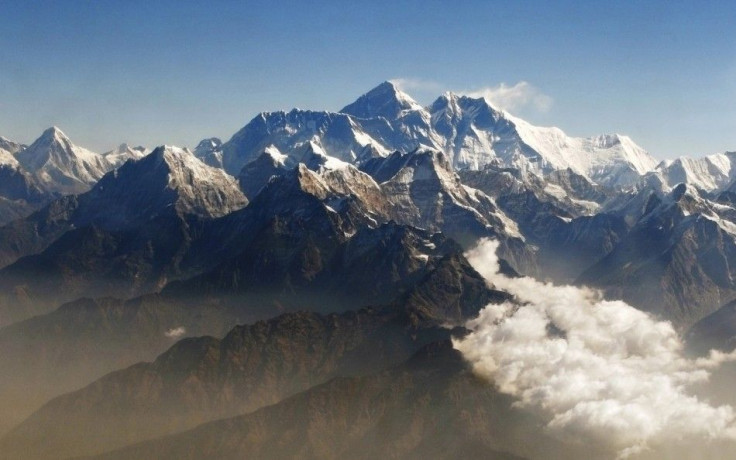After Mount Everest Brawl, Nepali Official Wants ‘Code Of Conduct’ For Sherpas, Climbers

Anything out of the ordinary that happens on Mount Everest will generally make the news. That’s why at first glance, the “brawl” that occurred at 23,000 feet (7,000 meters) over the weekend would appear to be just another frightening tale. But the reality is, the fight underlined questions about the evolving roles of climbers and Sherpa guides on the world’s tallest peak.
The first accounts of the brawl came from the technologically savvy European climbers involved.
Italian Simone Moro, who has climbed the world’s highest peak four times, issued a statement on his website claiming that as many as 100 Sherpas attacked him and fellow climbers Ueli Steck and Jonathan Griffith after the men knocked ice onto a Sherpa located below them along the Lhotse face.
“They became instantly aggressive and not only punched and kicked the climbers, but threw many rocks as well,” the statement read. “A small group of Westerners acted as a buffer between the out of control mob and the climbers, and they owe their lives to these brave and selfless people.”
In an interview with Planet Mountain back at Base Camp Monday evening, Moro acknowledged, “The relationship between Sherpa and Westerners has changed a lot.”
The Sherpas and local trekking companies that employ them agree, albeit for different reasons.
“It is totally wrong that the European climbers have a fight with Cho-Oyu Trekking's employees,” Beni Hyoju, an official of the Cho-Oyu Trekking agency, wrote in an email to International Business Times. “The European climbers had a fight with the commercial expedition teams climbing with Sherpa and they had a fight with the Expedition Operators Association climbing Sherpa team, who have been selected to make the route and fix the rope from camp two to camp four.”
The Sherpas -- local climbers from the Everest region who accompany most foreigners to fix ropes and carry supplies -- claim the three mountaineers completely ignored a request not to climb over their ropes until they had finished fixing the route for guided expeditions.
Outside Magazine reports that in an April 18 meeting, which team leader Moro did not attend, all expedition heads agreed nobody would disrupt or create distractions for fixing groups on dates where they would be setting the route for commercial trips up the mountain.
Steck, Griffith and Moro are three of the world’s most notable alpinists, and, as Moro admitted this week, they “don’t represent much business for the Sherpa.” They were climbing Mount Everest this season without guides, oxygen or ropes.
Nima Nuru Sherpa, Vice President of the Nepalese Mountaineering Association, said by phone from Kathmandu that a code of conduct for both Western climbers and Sherpa was necessary going forward.
“We should understand and respect the Westerner as well as the Sherpa and understand their duties,” he said. “I think for the betterment of this adventure, it is time to prepare a code of conduct for foreigners and Sherpa to make these responsibilities more clear. It’s time that we all find a solution to this so we don’t repeat this kind of incident in the future.”
Nima Nuru said he couldn’t remember any similar incidents during his 25 years of working with expeditions on Mount Everest, but supposed both groups’ egos were to blame for the brawl.
“Both sides have now apologized for their mistakes,” he noted. “Also, it has been decided that in the future, these things should be resolved down at the base camp with the help of legion officers and representatives from the Ministry of Tourism.”
The Roughly 4,000 climbers have reached the top of Mount Everest since New Zealander Edmund Hillary and Sherpa Tenzing Norgay first conquered the peak in 1953. Nepal will celebrate the 60th anniversary of that conquest next month.
© Copyright IBTimes 2024. All rights reserved.











